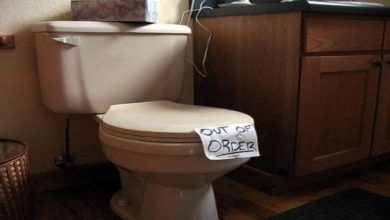Solving Taste and Odor Problems with Water Filtration

Many of us take clean and fresh-tasting water for granted until we encounter unpleasant tastes or odors coming from our taps. If you’ve ever had this problem, you’re not alone. Problems with taste and odor in tap water can be caused by a variety of factors, but the good news is that there are effective solutions available. In this comprehensive guide, we’ll look at the most common causes of taste and odor problems in tap water, as well as how water filtration systems can help solve these problems and provide you with clean, delicious water.
Common Sources of Tap Water Taste and Odor Issues
Before delving into the solutions, it’s critical to first understand what causes taste and odor issues in tap water. Here are some of the most common offenders:
- Chlorine and Chloramines: Chlorine and chloramines are disinfectants that are commonly used in water treatment facilities to kill harmful bacteria and pathogens. While they are required for water safety, they can give tap water a strong chemical taste and odor.
- Algae and Bacteria: Certain types of bacteria and algae can grow in water sources and distribution systems, causing musty or earthy odors and flavors in tap water.
- Organic Matter: When decaying leaves, vegetation, and other organic matter enter water sources, they can release compounds that cause unpleasant tastes and odors.
- Contaminants from Industrial or Agricultural Areas: Water sources near industrial or agricultural areas may be contaminated with chemicals, pesticides, or pollutants, which can impart unpleasant tastes and odors to the water.
- Sulfur Compounds: Sulfur compounds, such as hydrogen sulfide, can give tap water a distinct rotten-egg odor. These compounds can be produced by natural processes or by human activities.
- Corrosion and Plumbing: Old or corroded plumbing systems can introduce metallic tastes or odors into tap water.
Water Filtration Alternatives for Taste and Odor Issues
Water filtration is an effective method for dealing with taste and odor issues in tap water. Specific contaminants and impurities that cause these issues can be targeted by different types of filtration systems. Here are a few examples of common water filtration solutions:
- Activated Carbon Filters: These filters are extremely effective at removing chlorine and chloramines, which cause the chemical taste and odor in water. These filters can also reduce the presence of certain organic compounds, thereby improving water quality overall.
- Reverse Osmosis Systems: RO systems use a semi-permeable membrane to remove contaminants such as chlorine, chloramines, sulfur compounds, and other impurities that cause taste and odor problems. RO systems can produce exceptionally clean and delicious water.
- UV Water Purifiers: UV water purifiers disinfect water by killing bacteria, viruses, and other microorganisms that can cause taste and odor problems. While UV purifiers do not remove all contaminants, they do address microbial concerns effectively.
- Water Softeners: Water softeners are specifically designed to address hard water issues caused by minerals such as calcium and magnesium. While water softeners do not directly eliminate taste and odor problems, they can help improve water quality by reducing scaling and mineral buildup in plumbing, which can contribute to metallic tastes.
- Multi-Stage Filtration Systems: To provide comprehensive water treatment, multi-stage filtration systems combine various filtration methods such as activated carbon, sediment filtration, and UV purification. These systems are capable of dealing with a wide range of contaminants, including taste and odor issues.
Selecting the Best Filtration System
Consider the following factors when selecting the best water filtration system for your specific taste and odor issues:
- Water Test: Begin by performing a water test to identify the specific contaminants and impurities in your tap water. For basic assessments, you can hire a professional or use at-home water testing kits.
- Contaminant Removal: Choose a filtration system that effectively targets the contaminants that cause taste and odor issues in your water. If chlorine is the main concern, an activated carbon filter may suffice. Consider a multi-stage system for a broader range of issues.
- Flow Rate and Capacity: Consider the filtration system’s flow rate and capacity to ensure it can meet your household’s water usage needs. The filtration rates and amount of water that each system can treat per day vary.
- Maintenance and Replacement: Determine the system’s maintenance requirements. Some systems require filter replacement or cleaning on a regular basis, while others may require professional service. Consider the ongoing maintenance costs.
- Installation: Consider the installation requirements as well as the compatibility with your plumbing. Some filtration systems are designed for do-it-yourself installation, while others may require professional installation.
- Budget: Create a budget for your water filtration system that includes both the initial purchase price and ongoing maintenance costs. Remember that higher-quality systems may have a higher initial cost but can provide long-term savings.
Tips for Installation and Maintenance
Follow these installation and maintenance tips after you’ve chosen and installed a water filtration system to ensure its effectiveness:
- Proper Installation: Whether you do it yourself or hire a professional, carefully follow the manufacturer’s installation instructions. Ascertain that all components are securely connected.
- Filter Replacement on a Regular Basis: If your system uses filters, follow the recommended filter replacement schedule. Filters that are overused or clogged may lose their effectiveness.
- Routine Maintenance: As specified by the manufacturer, perform routine maintenance tasks such as cleaning and sanitizing components. Regular maintenance can help your filtration system last longer.
- Water Pressure Monitoring: Keep an eye on your water pressure because extreme high or low pressure can impair the performance of some filtration systems. If necessary, install a pressure regulator.
- Professional Servicing: If you have any questions about maintenance or if your system needs professional service, don’t hesitate to contact a qualified technician or plumber such as True Plumbing.
Conclusion
Having to deal with taste and odor issues in tap water can be both frustrating and upsetting. With the right water filtration system, however, you can effectively address these issues and enjoy clean, delicious water in your home. Before making a decision, determine which contaminants are causing problems in your water and select a filtration system that meets your needs, budget, and maintenance preferences. Regular maintenance and proper installation are required to ensure that your chosen filtration system remains effective. By following these steps, you will be able to say goodbye to unpleasant tastes and odors and enjoy refreshing, high-quality water every time you turn on the faucet. For expert guidance on selecting and installing the ideal water filtration system for your home, don’t hesitate to view True Plumbing’s website.




